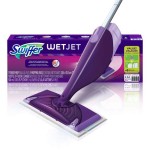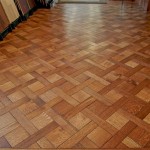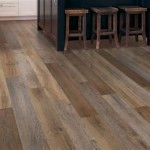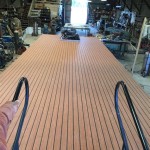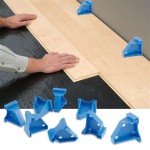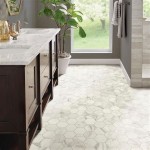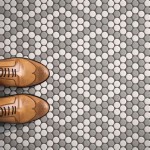Cork Laminate Flooring: A Comprehensive Guide
Cork laminate flooring represents a unique intersection of natural sustainability and engineered durability. It combines the inherent benefits of cork with the practicality and affordability of laminate manufacturing techniques. This guide provides a detailed exploration of cork laminate flooring, encompassing its construction, advantages, disadvantages, installation, maintenance, and comparisons to other flooring options.
Understanding the composition of cork laminate flooring is crucial to appreciating its properties. Typically, it consists of several distinct layers fused under high pressure and heat. The top layer, often a wear layer, protects the flooring from scratches, stains, and fading. Beneath this lies a decorative layer, often a high-resolution image mimicking wood, stone, or tile. Critically, a layer of cork is incorporated, contributing to the flooring's comfort, insulation, and sound-dampening qualities. Finally, a backing layer provides stability and moisture resistance.
The presence of the cork layer distinguishes cork laminate from standard laminate. This layer is usually made from recycled cork granules, making the flooring environmentally friendly. The thickness of the cork layer can vary, impacting the overall performance and comfort of the flooring.
Key Advantages of Cork Laminate Flooring
Cork laminate flooring offers a range of benefits, making it an appealing choice for various applications. These advantages stem primarily from the inherent properties of cork itself.
Comfort and Warmth: Cork is a naturally resilient material. This inherent elasticity provides a cushioned feeling underfoot, reducing fatigue and improving comfort, particularly when standing for extended periods. Unlike hard surfaces like tile or stone, cork retains warmth, making it comfortable to walk on even during colder months. The thermal insulation properties of cork contribute to energy efficiency by helping to maintain a stable room temperature, reducing heating costs.
Sound Dampening: Cork is an excellent sound absorber. Its cellular structure traps and dissipates sound waves, reducing noise transmission between floors and within a room. This characteristic makes cork laminate flooring a particularly suitable option for apartments, condominiums, and homes with multiple levels. It also benefits spaces where noise reduction is crucial, such as home offices or children's playrooms.
Sustainability: Cork is harvested from the bark of the cork oak tree (Quercus suber), a renewable resource. The trees are not felled; instead, the bark is carefully stripped every nine years, allowing the tree to continue growing and absorbing carbon dioxide. The use of recycled cork in the laminate construction further enhances its environmental friendliness. This sustainable harvesting practice ensures the long-term viability of cork forests, contributing to biodiversity and carbon sequestration.
Durability and Resistance: While not as resistant as some solid wood or tile options, cork laminate flooring offers good durability for residential and light commercial applications. The wear layer provides protection against scratches, scuffs, and stains. Cork's natural properties also make it resistant to mold and mildew growth, contributing to a healthier indoor environment. Proper maintenance can significantly extend the lifespan of cork laminate flooring.
Easy Installation: Many cork laminate flooring products feature a click-lock installation system, allowing for relatively quick and easy installation. This system eliminates the need for adhesives or nails, simplifying the process and reducing installation time. DIY enthusiasts can often install cork laminate flooring themselves, saving on professional installation costs.
Aesthetic Appeal: Cork laminate flooring is available in a wide range of styles and colors, mimicking the appearance of wood, stone, or tile. The high-resolution decorative layer accurately replicates the textures and patterns of these materials, providing a visually appealing and versatile flooring option. This variety allows for seamless integration into diverse interior design schemes.
Potential Drawbacks of Cork Laminate Flooring
Despite its many advantages, cork laminate flooring has certain limitations that should be considered before making a purchase.
Susceptibility to Damage: While the wear layer offers protection, cork laminate is still susceptible to damage from sharp objects, heavy furniture, and prolonged exposure to moisture. Scratches and dents can occur if precautions are not taken. It is not recommended for areas with high levels of foot traffic or exposure to standing water.
Limited Water Resistance: While the backing layer provides some moisture resistance, cork laminate is not waterproof. Excessive moisture can cause swelling, warping, and damage to the flooring. Spills should be cleaned up promptly, and it is not suitable for bathrooms or laundry rooms without adequate ventilation.
Fading: Prolonged exposure to direct sunlight can cause the decorative layer to fade over time. Using window coverings or UV-resistant films can help mitigate this issue. The fading may be more noticeable in areas with high sun exposure.
Indentation: Heavy furniture or concentrated weight can cause indentations in the cork layer, particularly if furniture legs are not properly protected. Using furniture pads or wide-based supports can distribute weight and prevent indentations.
Cost: While generally more affordable than solid hardwood flooring, cork laminate can be more expensive than some other types of laminate flooring. The price reflects the added cost of the cork layer and its associated benefits.
Installation and Maintenance of Cork Laminate Flooring
Proper installation and maintenance are crucial for maximizing the lifespan and performance of cork laminate flooring.
Installation: Before installation, the subfloor must be clean, level, and dry. Any imperfections or unevenness in the subfloor can affect the stability and appearance of the flooring. Acclimatizing the flooring to the room's temperature and humidity for several days before installation is recommended. Follow the manufacturer's instructions carefully when installing the click-lock system. Leave an expansion gap around the perimeter of the room to allow for natural expansion and contraction.
Maintenance: Regular cleaning is essential for maintaining the appearance and hygiene of cork laminate flooring. Sweep or vacuum the floor regularly to remove dirt, dust, and debris. Use a damp mop with a mild, pH-neutral cleaner specifically designed for laminate flooring. Avoid using excessive water, as it can seep into the seams and damage the flooring. Wipe up spills immediately to prevent staining and moisture damage. Use furniture pads under heavy furniture to prevent indentations. Consider applying a protective coating or sealant to enhance the wear resistance of the flooring.
Repair: Minor scratches and scuffs can often be repaired with touch-up kits or scratch concealers. More significant damage may require replacing individual planks. Carefully remove the damaged plank and replace it with a new one, ensuring a proper fit and alignment with the surrounding planks.
When selecting a cleaning product ensure that's specifically safe for cleaning cork laminate, rather than a more general cleaner.
In conclusion, cork laminate flooring presents a compelling combination of aesthetic appeal, environmental responsibility, and practical functionality. By carefully considering its advantages and disadvantages, and by adhering to proper installation and maintenance procedures, consumers can make informed decisions and enjoy the benefits of this unique flooring option for years to come.

Complete Guide To Cork Flooring Installation Deerfoot Carpet

3 Decisions To Help You Narrow Down Your Cork Flooring Options Carlisle Wide Plank Floors

Complete Guide To Cork Flooring Installation Deerfoot Carpet

How To Install Cork Tile Flooring Diy Family Handyman

The Ultimate Guide To All In One Flooring Solutions

Inimitable Cork Flooring Benefits Installation Future Trends

Kitchen And Residential Design Wood Flooring A Complete Guide To Layout Installation Finishing

How To Install Cork Tile Flooring Diy Family Handyman

The Complete Guide To Floor Decor Contra Costa County Library Overdrive

Consider Cork Flooring For Your Home We Serenity Collection
Related Posts


